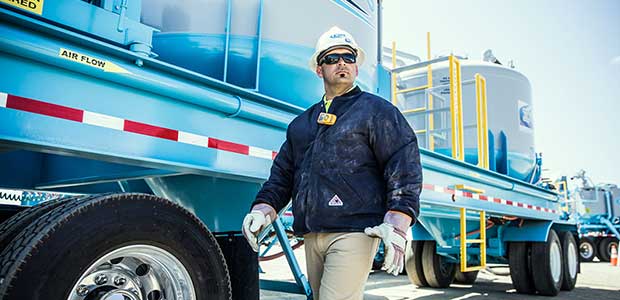
Managing Cold Stress
Cold stress shouldn’t be a risk you and your team overlook.
- By Derek Sang
- Dec 01, 2020
Workers in the oil and gas and electric utility industries frequently face flash fire, arc flash and heat stress hazards. But one hazard that may not be as talked about is cold stress. Cold stress occurs when skin temperature drops, lowering internal body temperatures and disabling the body’s ability to warm itself. It can lead to several medical conditions, including trench foot, chilblains, frostbite and hypothermia.
Warning signs of cold stress include:
- Shivering
- Chattering teeth
- Numbness
- Stiffness
- Cold, stinging, aching
- Loss of coordination
- Dilated pupils
- Slurred speech
- Disorientation and confusion
- Unusual fatigue
According to the OSHA General Duty Clause, the responsibility for worker safety is squarely on the employer. According to Section 5(a)(1): “Each employer (1) shall furnish to each of his employees employment and a place of employment which are free from recognized hazards that are causing or likely to cause death or serious physical harm to his employees; (2) shall comply with occupational safety and health standards promulgated under this Act.”
Tips on how you can reduce cold stress for you and your team:
- Train workers on the appropriate PPE and work practices to reduce cold stress risk
- Implement safe work practices
- Help workers who are used to working in warm areas build up a tolerance for working in the cold environment
- Schedule maintenance and repair jobs for warmer months
- Schedule cold-weather jobs for the warmer parts of the day
- Reduce the physical demands of workers
- Use relief workers or assign extra workers for long, demanding jobs
- Provide workers with warm liquids
- Provide workers with warm areas during peak cold periods
- Include a thermometer and chemical hot packs in first aid kits
- Train workers to avoid touching cold metal surfaces with bare skin
- Monitor workers’ physical condition and have them monitor their coworkers
Another great method to keep workers safe from potential cold stress is to utilize a layering system. A layering system allows workers the flexibility to remain safer and more comfortable in a variety of conditions. The layers should be compliant to the assessed hazard and layered correctly according to industry regulations.
Here are a few critical considerations when layering FR/AR garments:
- Always layer FR/AR garments underneath FR/AR outerwear
- The arc rating of the outermost FR/AR layer must be sufficient to prevent break open and ignition of any flammable base layer
- Non-FR/AR outerwear should never be worn over FR/AR garments
Cold stress shouldn’t be a risk you and your team overlook. That’s why it’s not only important to incorporate a comprehensive layered PPE program, but to be aware of the warning signs of cold stress and how you can reduce the risk.
This article originally appeared in the November/December 2020 issue of Occupational Health & Safety.
About the Author
Derek Sang is Bulwark's technical training manager. A VF Corporation brand, Bulwark has been a leading FR innovator for more than 40 years. Sang has worked closely with fortune 1000 companies as they look to develop PPE programs to protect employees against flash fire and arc flash hazards, focused on assisting safety professionals in understanding the standards and regulations as they pertain to flame-resistant clothing. He is an Authorized OSHA 10 and 30 hour instructor through Arizona State University OTI and has developed and conducted more than 150 educational and informational seminars on the hazards of arc flash and flash fire.